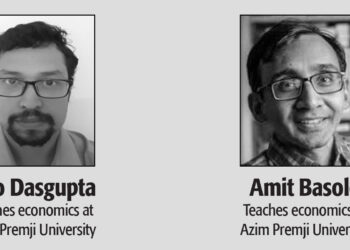The country has been witnessing many unprecedented slowdowns, on economy front the result of which have got serious implications on the well being of the people. The officials of the government try to camouflage the worsening scenario by quoting various endogenous and exogenous factors. The political representatives on the government side do not utter anything about it as if everything goes on as usual.
During the first tenure of BJP rule (2014-19) the demonetization measures implemented and the introduction of GST system had caused serious damage wherein small traders and industries are still unable to cope with. Many industrial units got closed aggravating concern on the unemployment problem.
India stands first numerically on the demographic scenario of having more of unemployed youths. No tangible scope is visible for their employability. But the Centre is focusing its attention much on non economic issues, which could be presumed as the tactic of diverting the attention of the public from the real issues.
In the second consecutive tenure of BJP led government also, the trend is not set right. The performance indicators of the country show unprecedented slowdown in the economy. GVA (Gross Value Added) stands at 4.9 per cent in the first quarter of 2019-20 which is the lowest in the last six years.
The manufacturing sector witnesses the two year low of 0.6 per cent growth during the first quarter of the current fiscal from 12.1 per cent during the first quarter of the previous year. In reality the automobile industry has experienced a heavy fall in its growth. Many workers in the industry have become jobless. When there is no job and income earning, the purchasing power of the people will be very low. The agriculture sector projected as the prime sector also saw a dramatic slowdown in growth to 2 per cent from 5.1 per cent over the previous same period.
Unmindful of all these economy-slowdowns in various vital sectors, the finance minister has announced a drastic structural change in banking sector. 10 more public sector banks are planned for merger into 4 entities, which the government hopes to bring many positive developments. The earlier bank mergers both organic and inorganic have not brought any significant developments. The banking model in India is unique and unparalleled in any other country. The structural changes brought in 1969 and 1980 through nationalization of private banks have brought many sea changes in the economy, thereby the banking habits got improved among the public especially in rural areas by availing various financial assistances under government sponsored schemes.
Now the reverse structural change has been mooted through merger of banks under the global premise that only large banks could deliver goods effectively.
The Centre meticulously acts on the global premise. The ulterior agenda in the merger of banks is privatisation, with the sole motive of profit earning with least concern for the welfare of the indigenous people and their interests. Unless the changes in the accounting norms that are adhered to by banks get reformulated, mere accomplishment of the global premise ‘bank merger brings prosperity’ will be meaningless.
Lot of debates and discussions have to take place, on the current scenario of the economy with the participation of the mainstream political parties in opposition. Public opinion must be sharpened about the fast moving slowdown of the country’s economy. The economists and public intellectuals should not restrict themselves to mere academic excercises. Open discussion with public deliberations must grow up which is a vital feature of democratic polity. Let the awareness about slowdown of the economy emerge among the public prior to insisting on the remedial measures to be carried out on the maladies of the economy.
nietzsche





